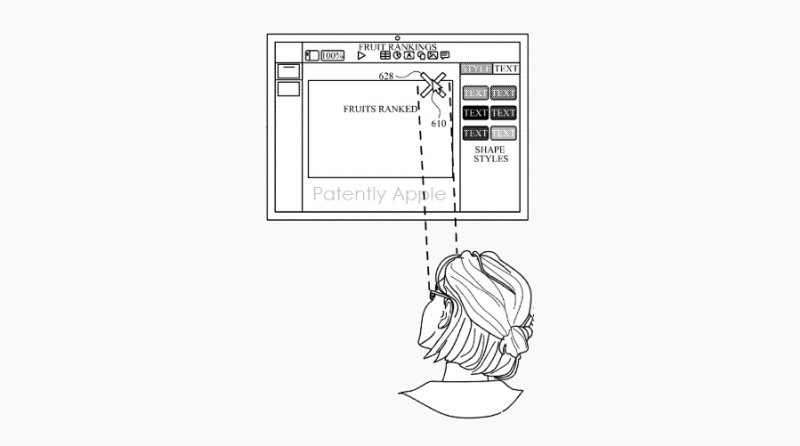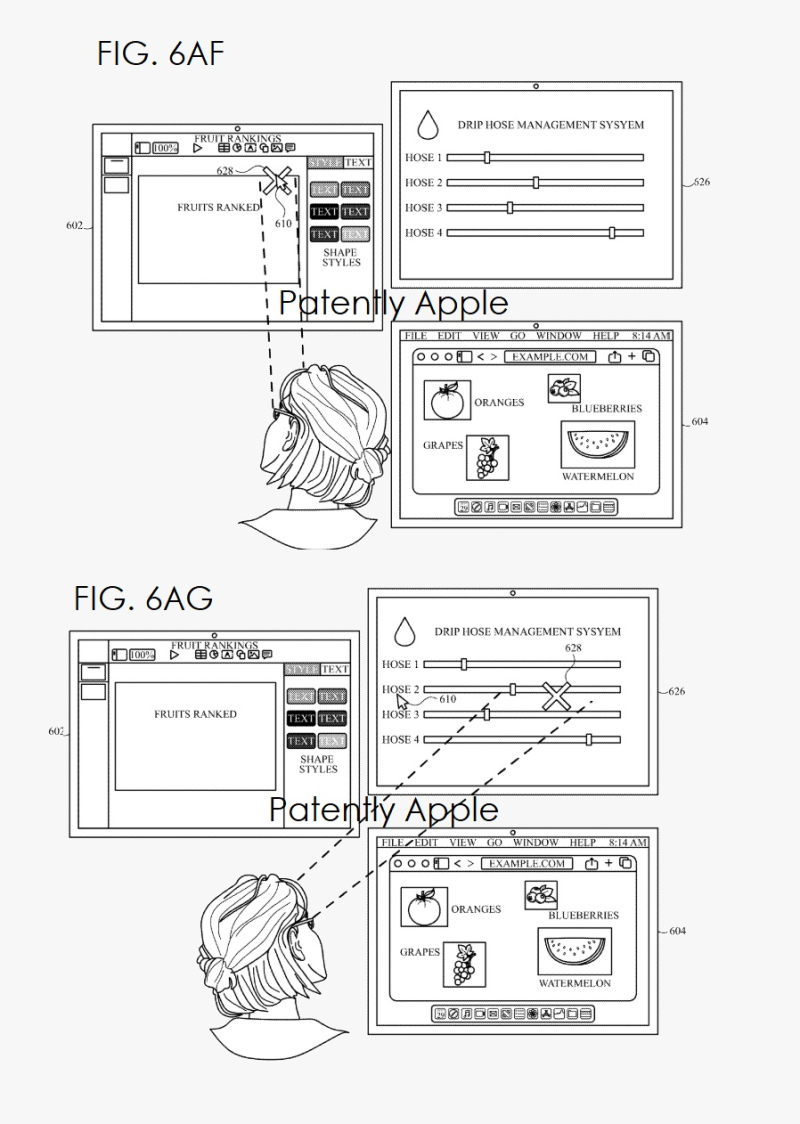
Today the U.S. Patent Office published a patent application of Apple's that relates to managing one or more displays. In particular, methods for moving an indicator between displays, moving an indicator based on body movement, and managing display operations.
Techniques for Managing One of More Displays
Some techniques for managing one or more displays using computer systems, however, are generally cumbersome and inefficient. For example, some existing techniques use a complex and time-consuming user interface, which may require multiple key presses or keystrokes to perform desired operations. Existing techniques require more time than necessary, wasting user time and device energy. This latter consideration is particularly important in battery-operated devices.
Accordingly, the present technique provides computer systems with faster, more efficient methods and interfaces for managing one or more displays. Such methods and interfaces optionally complement or replace other methods for managing one or more displays. Such methods and interfaces reduce the cognitive burden on a user and produce a more efficient human-machine interface. For battery-operated computing devices and/or systems, such methods and interfaces conserve power and increase the time between battery charges.
In some examples, the method comprises: displaying an indicator overlaid on a first location of a first area of first content; while displaying the indicator overlaid on the first location of the first area of the first content, detecting movement of a body part; and in response to detecting movement of the body part: in accordance with a determination that the body part is directed to a first area of second content, displaying the indicator overlaid on a previous location of a second area of the second content, wherein the indicator was last displayed overlaid on the previous location of the second area of the second content before the indicator was last moved from the second content, and wherein a location of the first area of the second content to which the body part is detected as being directed is different from the previous location of the second area of the second content; and in accordance with a determination that the body portion is directed to a first area of third content, displaying the indicator overlaid on a previous location of a second area of the third content, wherein the indicator was last displayed overlaid on the previous location of the second area of the third content before the indicator was last moved from the third content, and wherein a location of the first area of the third content to which the body part is detected as being directed is different from the previous location of the second area of the third content.
Apple’s patent FIGS. 6AF-6AG below illustrate user interfaces for jumping a cursor from one screen to another screen using body position tracking.
Patent FIG. 6AF illustrates the computer system in communication with three screens, including left screen #602, right screen #604, and upper screen #626. As illustrated in FIG. #6AF, the right screen is positioned down and to the right in space relative to the left screen and upper screen is positioned up and to the right in space relative to the left screen.
Moreover, the upper screen is located above the right screen. As illustrated in FIG. 6AF, the user is positioned in a way that user gaze #628 detected at a location on the left screen. As illustrated in FIG. 6AF, the computer system is displaying cursor #610 in the same location as user gaze #628.
At FIG. 6AF, the computer system detects a change in the position of the user (and/or the head of the user) from being positioned toward the left screen to being positioned toward the right of left screen.

At FIG. 6AG above, in response to detecting the user from being positioned toward the left screen to being positioned toward the right of left screen, a determination is made that the cursor should be moved to upper screen #626. In some examples, the determination is made because the cursor was closer to the upper screen than the right screen before detecting the change in the body position of the user toward the right of the left screen.
Looking back at FIG. 6AF, the computer system displayed cursor 610 closer to the top of left screen 602 than the bottom of left screen 602, where the top of left screen 602 is closer to upper screen 626 than right screen 604.
As illustrated in FIG. 6AG, in response to detecting the user from being positioned toward the left screen to being positioned toward the right of the left screen, the computer system jumps the cursor to the upper screen. Notably, at FIG. 6AG, user gaze #628 and the cursor are not at the same location on the upper screen. In this way, the cursor is not being displayed at a location that corresponds to the location of the user gaze.
TrendForce 2024 Infrared Sensing Application Market and Branding Strategies
Release: 01 January 2024
Format: PDF
Language: Traditional Chinese / English
Page: 172
|
If you would like to know more details , please contact:
|













